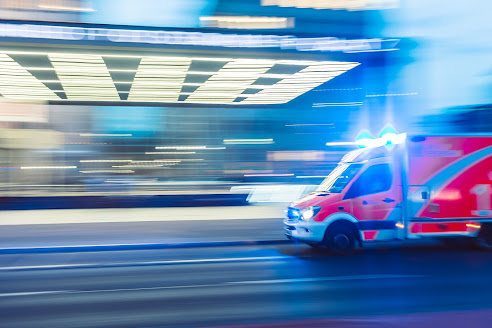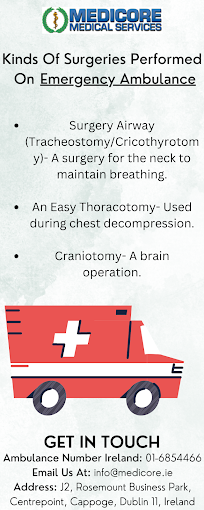Better Care And Understanding Are Available Through Medicore
Specifically designed for the transfer of sick and injured people, emergency ambulance are specialized vehicles. Transportation of patients to healthcare institutions like hospitals is made easier for everyone involved. In order to respond to medical emergencies, emergency medical services use ambulances. In order to attain this goal, warning signals like flashing lights and sirens are routinely used. Hospitals or other treatment facilities, they can transport both patients and emergency medical equipment. Additionally, they may quickly transport rescue workers to the scene of the incident, including paramedics. Ambulances are most frequently found in vans or pickup trucks. Other types of transportation include bicycles, boats, cars, limousines, and airplanes.
Ambulances have evolved into an essential part of our modern civilization, serving a variety of functions such as providing medical care to patients while they are in the emergency ambulance, treating accident victims on the scene, and transporting sick or injured people to hospitals or other medical facilities. The ambulances that we frequently see driving through the streets of our towns are the most common of the many different varieties. Each type of ambulance may be able to provide varying levels of medical assistance depending on the situation. The sizes and designs of emergency ambulance vary greatly. Ambulances that can cross borders, travel through congested cities, or even travel over harsh terrain can easily be made.
Patients can be preserved if they receive pre-hospital treatment, which is given by paramedics or other paramedical personnel, through quick medical procedures that maintain their vital signs while they are being transported to hospitals for additional care. Patient survival is made feasible through pre-hospital treatment. In a first-responder vehicle, such as an emergency ambulance, paramedics often provide emergency care. In order to ensure that the greatest number of lives are preserved, particularly during the infamous "Golden Hour," a series of regulations outlining the duties and responsibilities of the paramedic must be properly adhered to.
In order to start providing care to the patient, the paramedic's job needs them to first learn about the patient's medical history. Only twice should paramedics try to place intravenous lines before giving up when there is no immediate threat to the patient's life. A patient should have their heart monitored as soon as it is safe to do so if they have a history of cardiac dysfunction, are feeling tight in the chest, have an irregular pulse, have changes in blood pressure, or have all three of these symptoms.
The emergency patient intervention, evaluation, care, and transfer services offered by Medicare's emergency ambulance can all be utilized in a range of controlled, uncontrolled, and disaster-related scenarios. The required equipment, as well as the requisite information and expertise, are all present in these contexts. Emergency ambulance are ideally suited to provide these services as a whole, even if some components of this service can be provided to varying degrees by a wide range of experts and laypeople.





Comments
Post a Comment